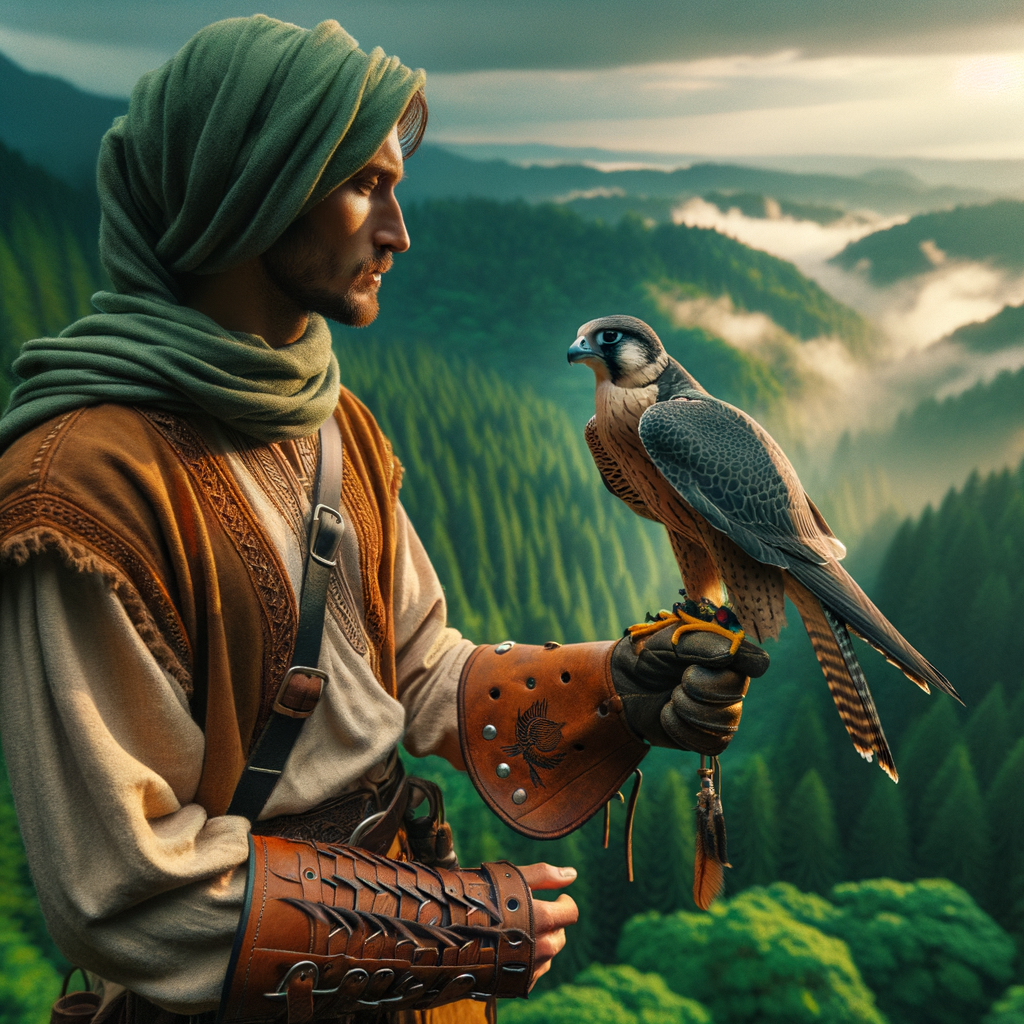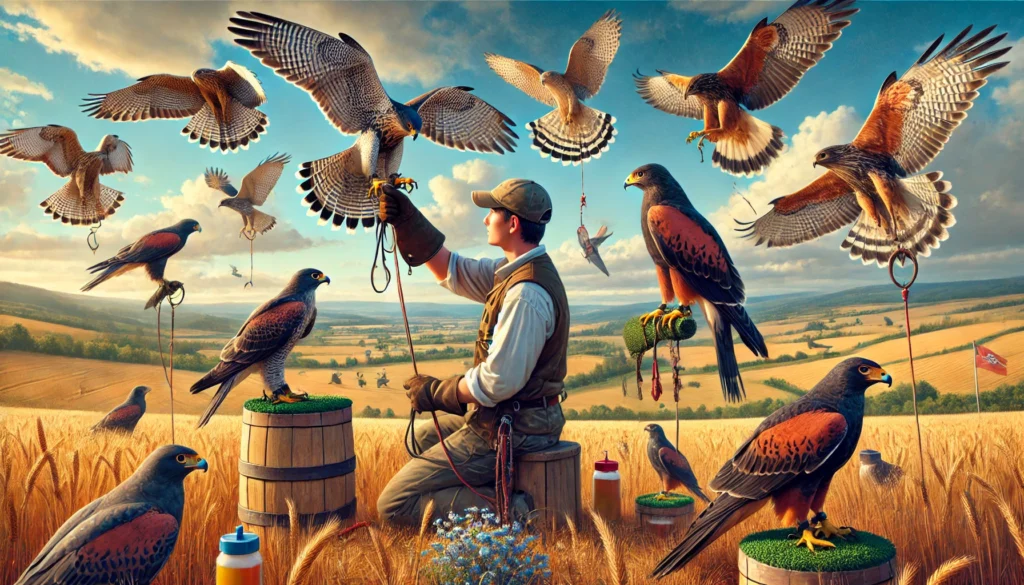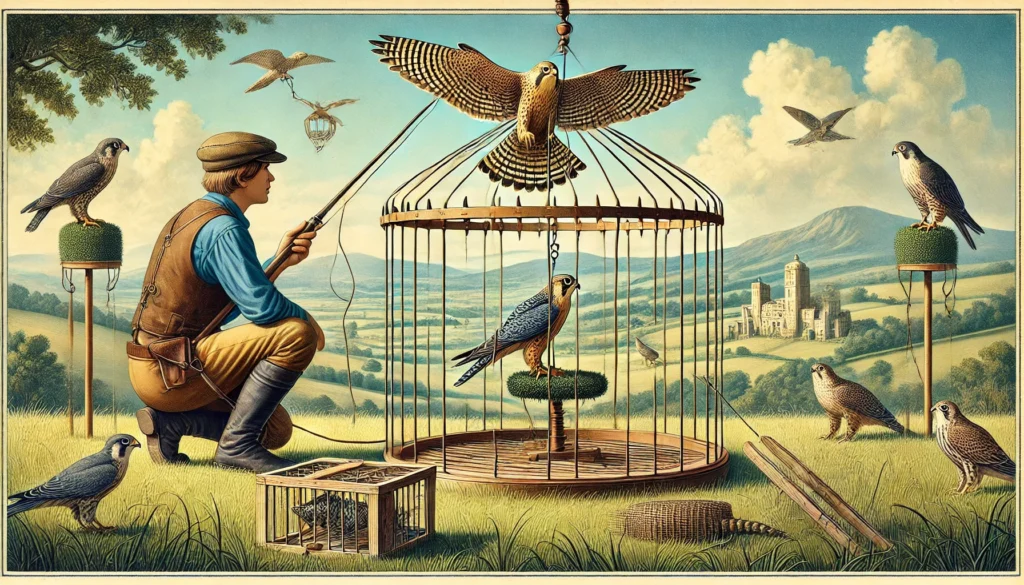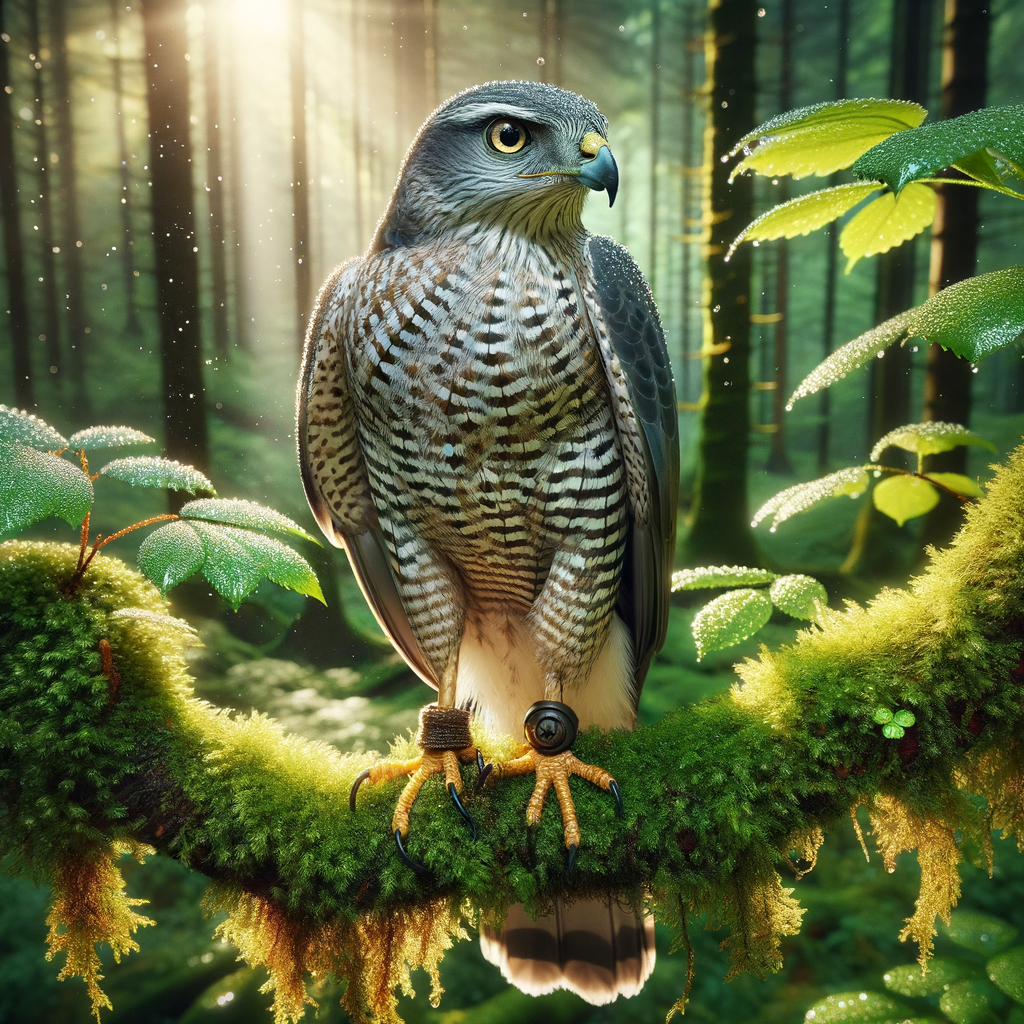Conservation Efforts in Falconry
- Preserving Wildlife: Falconry plays a significant role in protecting wild bird populations.
- Educating the Public: Learn Falconry provides valuable insights into the natural behaviors of birds of prey, fostering respect and appreciation.
- Supporting Biodiversity: By practicing responsible falconry, we contribute to maintaining ecological balance.
- Rehabilitation and Release: Many falconers are involved in rehabilitating injured birds and releasing them back into the wild.
- Sustainable Practices: Learn Falconry promotes ethical hunting practices that do not endanger bird species.
- Cultural Heritage: Falconry is a tradition that connects us to our shared cultural heritage, combining human skill and natural instincts.
- Research and Monitoring: Our efforts contribute to scientific research and monitoring of raptor populations.
- Community Involvement: Falconry fosters a sense of community and shared responsibility for conservation.
- Collaboration: Learn Falconry collaborates with conservation organizations to further protect raptors and their habitats.
Protecting Our Sky Hunters: Falconry’s Role in Conservation
Imagine the green hills of Ireland, where ancient Celtic warriors once roamed, now sheltering hidden treasures. You might think of leprechauns and pots of gold at the end of rainbows, but there’s another kind of treasure we need to talk about â the majestic falcons that soar through the skies. These magnificent birds, much like Ireland’s rich traditions, need protection. But did you know that one of the best ways to protect these amazing hunters is through the art of falconry?
At Learn Falconry, we’re passionate about these incredible birds and their natural habitats. Falconry isn’t just a sport; it’s a time-honored tradition that helps us understand and conserve our feathered friends. In this article, we’ll explore how our conservation efforts in the world of falconry are making a real difference.
Why should you keep reading? Well, just like an Irish tale that keeps you on the edge of your seat, the story of falconry and conservation is filled with captivating twists and turns. Discover how our expert falconers at Learn Falconry are preserving the wild beauty of these sky hunters and what you can do to help.
Ready to dive in? Let’s embark on this journey together and learn more about the vital role of falconry in protecting our winged companions!
The Importance of Falconry in Wildlife Conservation
When we think about falconry, many people imagine skilled falconers with their majestic birds soaring high in the sky. But did you know falconry plays a vital role in conservation efforts too? At Learn Falconry, we are passionate about using falconry for conservation to help protect wildlife and maintain a healthy ecosystem.
What is Conservation Falconry?
Conservation falconry is the practice of using trained birds of prey to support wildlife conservation. These efforts often involve various activities that help balance natural ecosystems. This is not just about training falcons; it’s about creating a positive impact on our environment.
For instance, falcons are used in specific programs to control pest populations, thereby preserving the natural balance in certain areas. To learn more about falcon training, check out our detailed guide on basic training techniques.
Protecting Wildlife through Falconry
One significant way falconry helps in protecting wildlife is through habitat restoration. This is essential because many animal species are losing their homes due to human activities. Falcons can help restore habitats by controlling the population of invasive species, which often disrupt the natural ecosystem.
In addition, falconry techniques like trap-and-release are used to manage and monitor wildlife populations. This ensures that endangered species are protected and that their populations can grow in a safe environment.
The Role of Falconry in Eco-Balancing
Falconers work closely with conservationists to maintain the balance in ecosystems. For instance, they might be involved in reintroducing falcons back into the wild to boost population numbers. These efforts are crucial in places where falcon populations have dwindled due to factors like habitat loss and climate change.
Falconry for conservation also includes breeding programs. Our article on falconry breeding programs provides more information on how these programs work and their benefits to the environment.
Legal and Ethical Considerations
Conservation efforts in falconry are supported by various laws and ethical standards. These regulations are designed to protect both the birds and the environment. At Learn Falconry, we emphasize ethical falconry practices to ensure that our activities positively impact wildlife. Check out our page on legal aspects of falconry to learn more about these regulations.
The Future of Conservation Falconry
Looking ahead, conservation falconry will become even more important as we face new environmental challenges. With advances in falconry technology, such as GPS tracking and digital health monitoring, falconers can better support conservation efforts and improve the welfare of these magnificent birds.
At Learn Falconry, we are dedicated to educating the community about the importance of this ancient practice in modern conservation efforts. By participating in programs and spreading awareness, we can all play a part in protecting our natural world.
For more information on how falcons contribute to ecosystem balance, visit our article on falconry and ecosystem balance.
By promoting conservation falconry, we aim to foster a deeper appreciation for these remarkable birds and their role in maintaining the health of our planet. Join us at Learn Falconry in our mission to protect wildlife and ensure a sustainable future. For beginners eager to get involved, visit our guide on getting started with falconry.
Conservation Efforts in Falconry
Falconry, the ancient practice of hunting with trained birds of prey, has evolved into a modern tool for wildlife conservation. Around the world, falconers are actively involved in protecting and managing bird species, ensuring their populations thrive. Let’s dive into some key aspects of these conservation efforts!
Falconry Regulations and Permits
Peregrine Falcon Regulations
In Montana, regulations for the 2024-2025 biennium allow for the take of young Peregrine Falcons for falconry. This decision is based on an analysis showing that the Peregrine Falcon population is healthy and that the practice does not negatively impact wild populations or their prey.
Falconry Permits
States like Utah are offering falconry take permits. In 2024, Utah will grant 17 permits, 16 for residents and 1 for a non-resident, with the application period running from February 1 to March 31, and the take season from May 1 to August 31.
| State | Falconry Take Permits | Residents | Non-residents | Application Period | Take Season |
|---|---|---|---|---|---|
| Utah | 17 | 16 | 1 | Feb 1 – Mar 31, 2024 | May 1 – Aug 31, 2024 |
Falconry Licensing
For instance, New York State requires aspiring falconers to pass an examination with a score of 80% or higher to obtain the Apprentice License. The exam takes place on April 12, 2024, with a registration deadline of April 10, 2024.
| State | License Type | Exam Date | Registration Deadline | Minimum Score |
|---|---|---|---|---|
| New York | Apprentice License | Apr 12, 2024 | Apr 10, 2024 | 80% |
Falconry and Conservation Projects
Harris Center Monitoring
The Harris Center in the Monadnock Region engages in monitoring American Goshawks and Broad-winged Hawks, focusing on conservation and research efforts. This includes tracking the movements, breeding success, and survival rates of these species.
| Species | Monitoring Region | Focus Areas |
|---|---|---|
| American Goshawks | Monadnock Region | Movement, Breeding, Survival |
| Broad-winged Hawks | Monadnock Region | Movement, Breeding, Survival |
Falconry in Global Conservation
Saker Falcon Project in Mongolia
One notable project involves the construction of nearly 5,000 artificial nests for Saker Falcons in Mongolia, resulting in the production of over 3,000 chicks. Additionally, up to 300 licenses for trapping wild Sakers are issued, supporting both conservation and sustainable use.
Hybridization Concerns
A critical aspect of falconry is preventing hybridization between exotic and native raptors. Introducing exotic birds into the wild can lead to genetic mixing, which might endanger the genetic integrity of local species. Falconers are thereby encouraged to conduct genetic testing to safeguard wild populations.
Falconry and Research
Project Goshawk
Falconers also play a pivotal role in researching and conserving goshawks, and tracking rehabilitated golden eagles using satellite telemetryâa technology that helps map the movement and behaviors of these majestic birds across vast landscapes.
This information highlights how falconry, guided by stringent regulations and dedicated conservation efforts, contributes significantly to the preservation of bird species. Falconers are not just hunters; they are stewards of the wild, constantly working to ensure that our feathered friends fly free for generations to come.
The Importance of Falconry in Conservation Efforts
Falconry is not just an ancient tradition but a key player in modern conservation efforts. In 2024, regulations and initiatives across various states, such as Montana and Utah, ensure that falconry practices do not negatively impact wild populations. Programs like the International Association for Falconry’s welfare course emphasize maintaining natural habitats and the health of both birds and their prey.
Efforts like Utah’s falconry permits, the rigorous licensing process in New York, and the significant educational activities at the Harris Center highlight a collaborative commitment to preserving our avian friends. Moreover, initiatives overseas, such as Mongolia’s artificial Saker nests, demonstrate the global reach and importance of these conservation measures.
Digital technologies and citizen science are also pivotal, enhancing monitoring and research capabilities. This blending of tradition with modern science sets the stage for a promising future where both humans and raptors thrive together. Falconry, thus, serves as a bridge between the past and a sustainable future, underscoring the critical role of responsible practices and innovative strategies in wildlife conservation.
Conservation Efforts in Falconry: Common Questions Answered
-
How Does Falconry Help With Conservation?
Falconry plays a significant role in the conservation of birds of prey. Falconers often participate in breeding programs that help increase the population of endangered species and reintroduce them into the wild. These programs are essential because they ensure the survival and genetic diversity of these majestic birds. To learn more about the specific roles falconers play in conservation, visit Role of Falconry in Conservation.
-
What Are Some Examples of Successful Falconry Conservation Projects?
There have been several successful conservation projects led by falconers. For instance, the Peregrine Falcon reintroduction efforts in North America are a notable success story. Once on the brink of extinction due to pesticide use, Peregrine Falcons have made a remarkable comeback, thanks to the dedicated efforts of falconers and conservationists. You can explore more Conservation Success Stories to see other achievements in this field.
-
How Do Falconry Practices Ensure the Well-being of Falcons?
Falconry practices are designed with the well-being of the birds in mind. This includes proper housing, nutrition, and medical care. Falcons used in falconry are often healthier and live longer lives than their wild counterparts due to the high standards of care provided by their handlers. For more on maintaining falcon health, visit Basic Falcon Nutrition and Common Falcon Health Issues.
-
What Legal Regulations Exist to Protect Falcons in Falconry?
Falconry is subject to strict legal regulations to ensure the protection and ethical treatment of the birds. These laws cover everything from the capture and breeding of falcons to their training and use in hunting. Falconers must obtain proper licenses and comply with both national and international regulations. To understand these laws better, check out Falconry Licensing Requirements and Conservation Falconry Laws.
-
How Do Falconers Train Falcons for Conservation Purposes?
Training falcons involves various techniques that ensure they are fit for conservation tasks, such as hunting for population control or participating in educational programs. These training methods include positive reinforcement, fitness conditioning, and specialized tasks training. Knowledge on specific training approaches can be found in Training Techniques.
-
How Can the Public Support Falconry-Based Conservation Efforts?
The public can support these efforts by donating to conservation programs, participating in educational events, or by becoming a falconry enthusiast themselves. Many falconry clubs and organizations offer opportunities for the public to engage in conservation activities. For those interested in learning more about falconry and its conservation impact, visiting Falconry and Conservation provides a good starting point.



